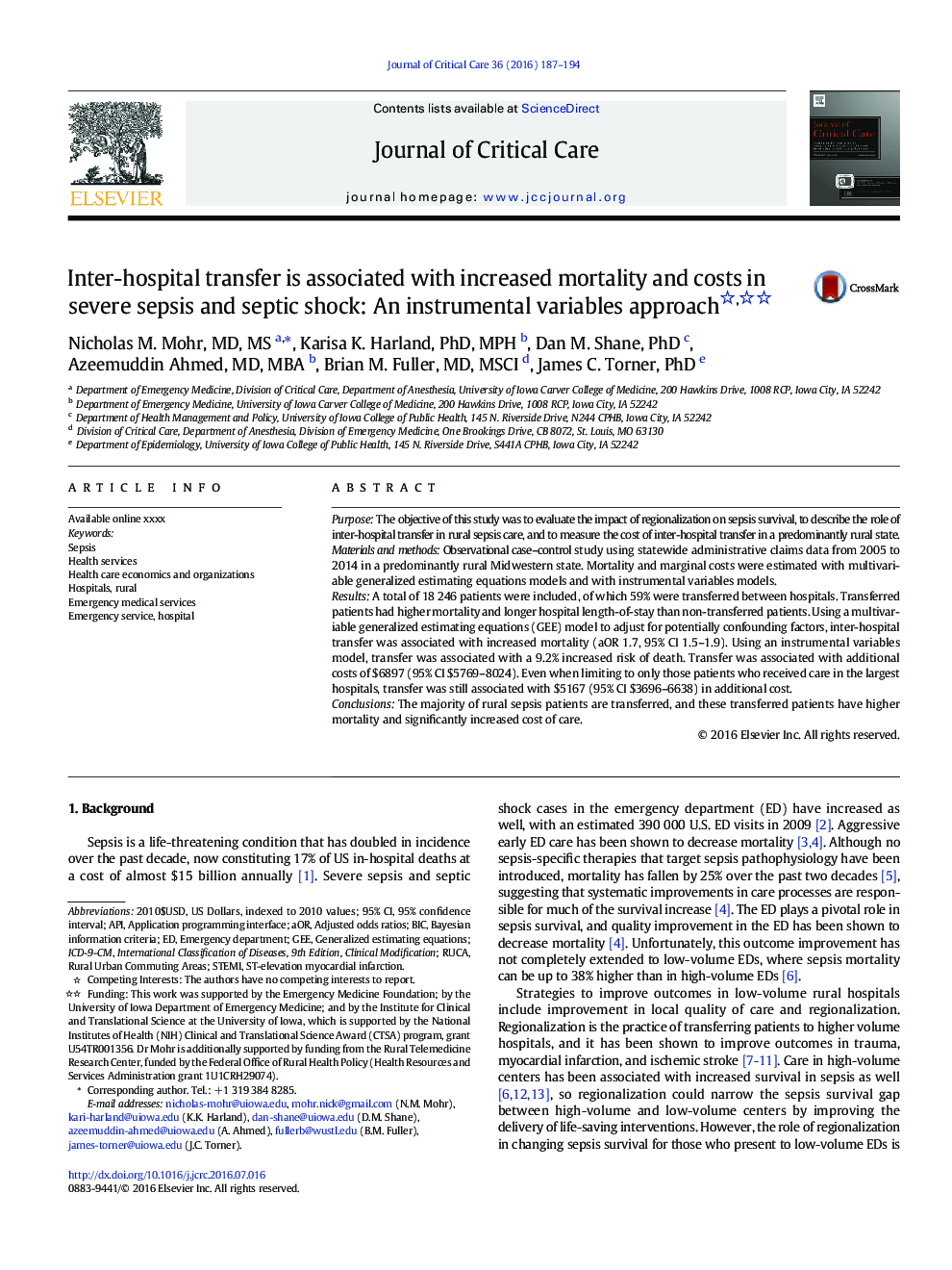| Article ID | Journal | Published Year | Pages | File Type |
|---|---|---|---|---|
| 2764366 | Journal of Critical Care | 2016 | 8 Pages |
PurposeThe objective of this study was to evaluate the impact of regionalization on sepsis survival, to describe the role of inter-hospital transfer in rural sepsis care, and to measure the cost of inter-hospital transfer in a predominantly rural state.Materials and methodsObservational case–control study using statewide administrative claims data from 2005 to 2014 in a predominantly rural Midwestern state. Mortality and marginal costs were estimated with multivariable generalized estimating equations models and with instrumental variables models.ResultsA total of 18 246 patients were included, of which 59% were transferred between hospitals. Transferred patients had higher mortality and longer hospital length-of-stay than non-transferred patients. Using a multivariable generalized estimating equations (GEE) model to adjust for potentially confounding factors, inter-hospital transfer was associated with increased mortality (aOR 1.7, 95% CI 1.5–1.9). Using an instrumental variables model, transfer was associated with a 9.2% increased risk of death. Transfer was associated with additional costs of $6897 (95% CI $5769–8024). Even when limiting to only those patients who received care in the largest hospitals, transfer was still associated with $5167 (95% CI $3696–6638) in additional cost.ConclusionsThe majority of rural sepsis patients are transferred, and these transferred patients have higher mortality and significantly increased cost of care.
